Abstract
Visualyse Interplanetary has recently been updated with improved general satellite dynamics definition and ability to specify spacecraft to be located at a Lagrange Points, as described in this Technical Note (TN).
General Satellite Dynamics
General satellite’s dynamics can be selected by a number of methods, such as:
- Orbit model of point mass
- Orbit model of point mass plus J2
- Two-line element set using SGP4/SDP4
- Position and velocity vectors.
A new method is now available, namely:
- Selected as being located at a Lagrange point.
These are described further below.
Point Mass and Point Mass Plus J2 Orbit Models
General satellite station types are often defined using the standard Keplerian orbit elements, as shown below:
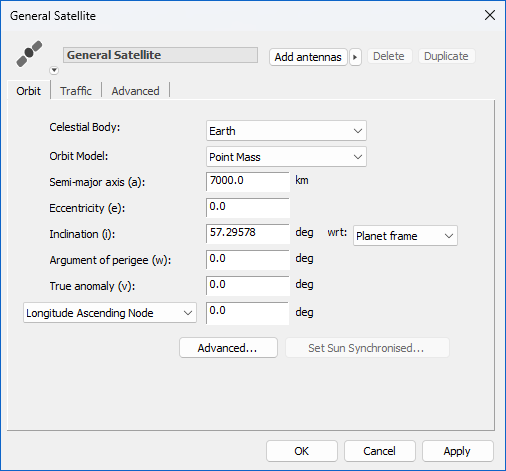
There are also options to define the reference from the ascending node and equatorial plane.
For Earth orbiting stations where the orbit modal is Point Mass plus J2, it is also possible to use the tool to set the orbit to be sun-synchronised.
Two-line element set using SGP4/SDP4
Another way to define orbit elements is via the Two-Line Element (TLE) which looks a bit like this:
ISS (ZARYA)
1 25544U 98067A 24037.20615536 .00014912 00000+0 27301-3 0 9996
2 25544 51.6401 249.3892 0001810 205.4863 314.8810 15.49552210438086
These specify the measured dynamics of satellites actually orbiting the Earth.
If the TLE option is selected, the dialog changes to allow a TLE to be loaded from a text file, as shown here:
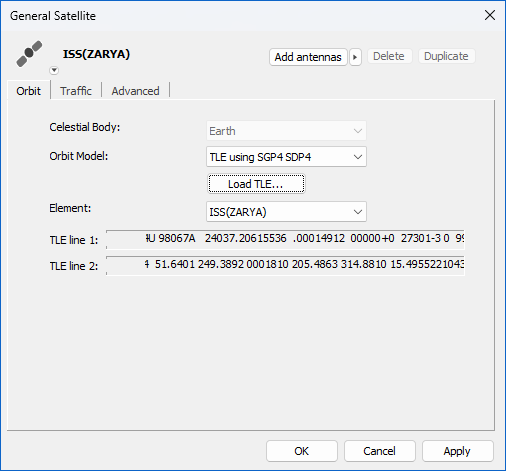
The orbit model is then the SGP4/SDP4 from Space-Track.
Position and Velocity Vectors
Another method to define the station’s location is directly via the spacecraft’s position and velocity vectors at specific times, combined with Lagrangian interpolation.
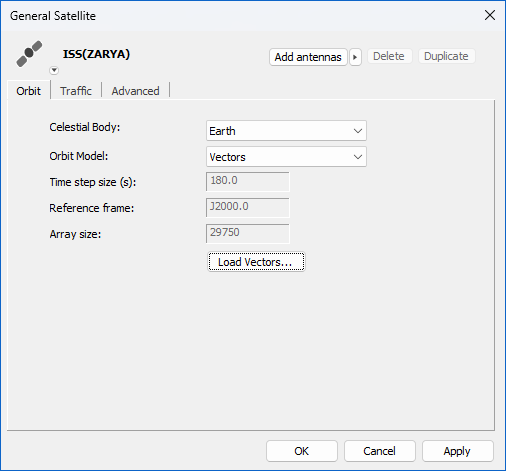
This enables the position and velocity of the spacecraft to be specified in J2000.0 vectors centred on the specified celestial body. The format of the data is comma separated values (CSV), with example:
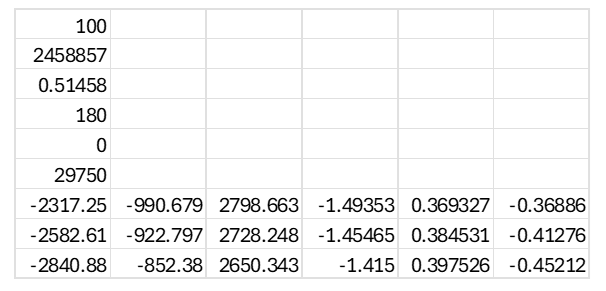
Specify Station at Lagrange Point
Lagrange points are locations within the gravitational influence of two celestial bodies where there is equilibrium. Spacecraft can be located at these points and remain stationary relative to the two celestial bodies. The locations are shown in the figure below:
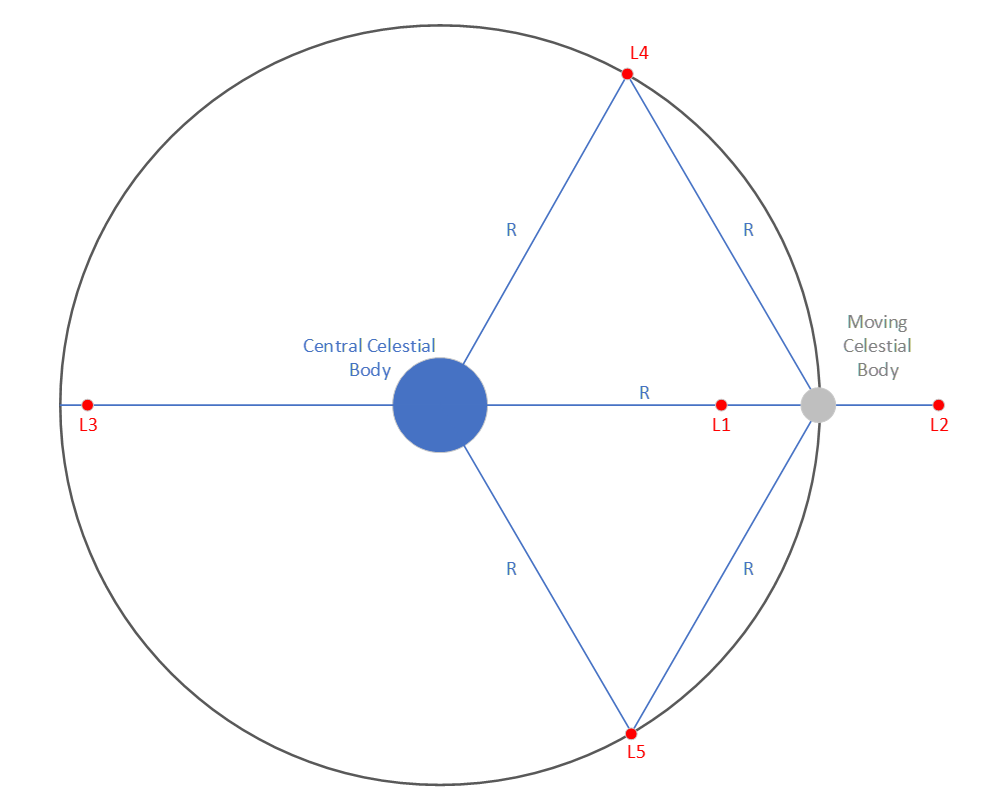
Examples of Lagrange points include those within the Earth-Moon system and the Sun-Earth system.
In Visualyse Interplanetary, a General Satellites can be selected as being located at one of these points by identifying the moving celestial body and then the Lagrange point of interest. The central celestial body is then automatically identified as will be the one that the moving celestial body orbits around. So, for example:
-
to locate a General Satellite in one of the Earth-Moon Lagrange points, select as celestial body the Moon.
-
to locate a General Satellite in one of the Sun-Earth Lagrange points, select as celestial body the Earth.
An example is shown in the figure below:
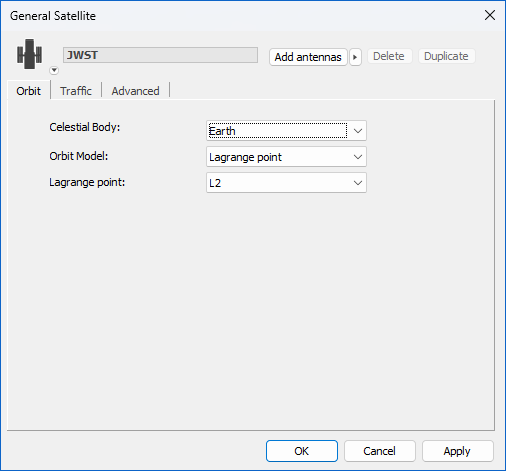
Note it is not possible to locate a Lagrange point when the celestial body is the Sun or Earth in ECI mode as there is no central celestial body in either case.
The Lagrange points are calculated using the approximation that the moving celestial body mass is significantly less than that of the central celestial body. More information is available in this reference:
http://physics.wku.edu/~gibson/astr414/lab/lagrange/L_calc_cornish.pdf
The Lagrange points are assumed to be in the plane of the moving celestial body’s orbit around the central celestial body.
